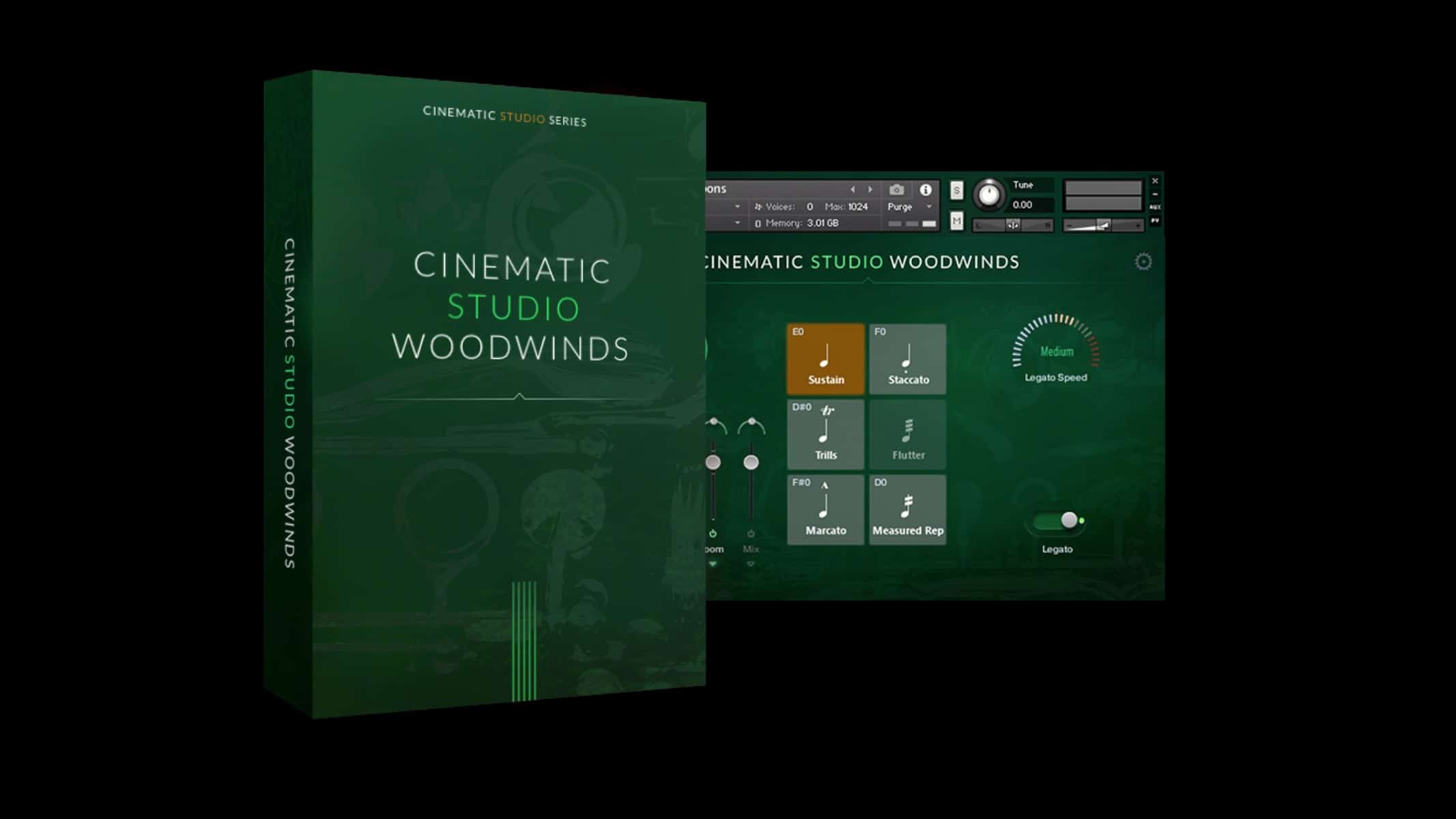In This Issue
Synth and Software Review: Cinematic Studio Woodwinds

Jay Asher sums up the latest section in the Cinematic Studio series of orchestral sample libraries
Few sample libraries have been as eagerly anticipated as this latest entry in the Cinematic Studio series. That’s because few sampled libraries have received as nearly universal praise as their strings, solo strings, brass, and piano libraries.
And to my ears this may be the best one in the series.

Cinematic Studio Woodwinds includes solo woodwinds: flute, piccolo, alto flute, oboe, English horn, clarinet, bass clarinet, bassoon, contrabassoon. It also includes à2 flutes, oboes, clarinets, and bassoons. This is a Kontakt Player library, so a full version of Kontakt is not required.

Like the other libraries in the series, it was recorded on the Trackdown scoring stage in Sydney. Developer Alex Wallabank and his team just know how to get a great sound. The sound is lovely even without added reverb, although there is a hall reverb included.

In keeping with their design philosophy, Cinematic Studio provides the articulations you commonly need and makes them easy to use. It includes sustains and legato (both with and without vibrato); staccato, staccassimo and marcato; sforzando; half and whole note trills; playable runs; and flutter-tongued flutes.
There are three mic positions, but the instruments default to a mix. Selecting one of the mic positions turns off the mix, after which you can enable and mix them individually, even routing them to separate outputs in Kontakt.

Like all the instruments in the Cinematic Studio series, the woodwinds are highly playable. They are also simple to use: CC1 (mod wheel) crossfades between dynamic layers, and CC11 (Expression) controls volume. Turning off legato allows you to play chords, for those who are not purists.
Half step and whole step trills are accomplished by playing two notes about 25 milliseconds apart, with or without legato. You can keyswitch through articulations, or use MIDI Control Changes (you configure the ones you want to use).
Cinematic Studio’s legatos are among the best sounding, but their sustained and marcato lines do have some latency that needs compensating for in your playing (about a quarter of a second). Their rationale is that there’s a slight timbre and dynamic swell when a player gets ready to transition to a connected note, which the library includes for realism. The higher the velocity, the lower the latency.

Some users have been really bothered by this, but I personally have adjusted easily. And Cinematic Studio is quite adamant about this being a feature rather than a bug. From their website: “We feel that it’s worth the effort [compensating for the delay when playing]; this is a fundamental aspect of the library, and will not be changed.”
At the time of this review there are a few bugs that they are working on, but in the past they’ve dealt with them. Demos and excellent walkthrough videos, along with accompanying MIDI files, are available on the Cinematic Studio website.
This library was definitely worth the wait. Of all the sampled instrument sections of the orchestra, woodwinds is the one with the fewest libraries I really like. Even if you don’t own the other members of the series, you should consider this one. It’s on the wetter side, but it has no problem blending with drier libraries.
Beautiful sound, very playable, easy-to-read and uncluttered interface. Now bring on the percussion!
Price: $399. Company website: https://cinematicstudioseries.com/woodwinds/















